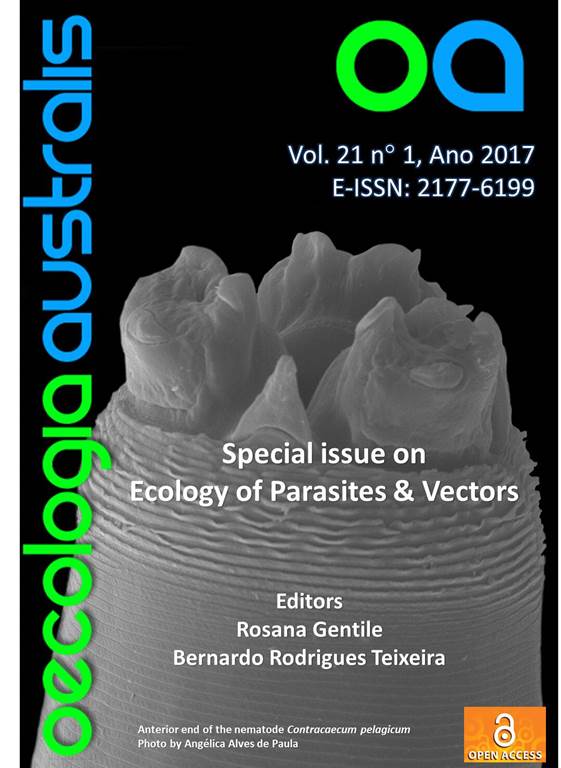A REVIEW OF HELMINTHS OF THE GREEN TURTLE (Chelonia mydas) IN BRAZIL
DOI:
https://doi.org/10.4257/oeco.2017.2101.02Keywords:
endoparasites, geographic distribution, occurrence records.Abstract
The study of helminths can supply information about the ecology of their hosts and support evaluations of population stocks, migration patterns and trophic ecology. However, little is known about the parasites of Chelonia mydas, a globally distributed endangered species, along the Brazilian coast. Here we present a review of the literature of helminth species found in green turtles along the Brazilian coast, considering their global distribution, their infection sites and their other host species. The findings show that in recent years there has been a large increase in the number of studies reporting the parasitic species of these turtles in Brazil, which consequently increased the parasite species list of the green turtle. The helminth fauna of green turtles from Brazil is composed of 31 species of digenetic trematodes of seven families, and four species of nematodes of two families. Two of these helminths species are endemic, while 33 are widely distributed. They are concentrated in particular regions, although the observed distribution is likely related to the main research centers and not the actual geographical distribution of the species. Endemism was observed only for the digenean Ruicephalus minutus and for the nematoda Tonaudia freitasi.


